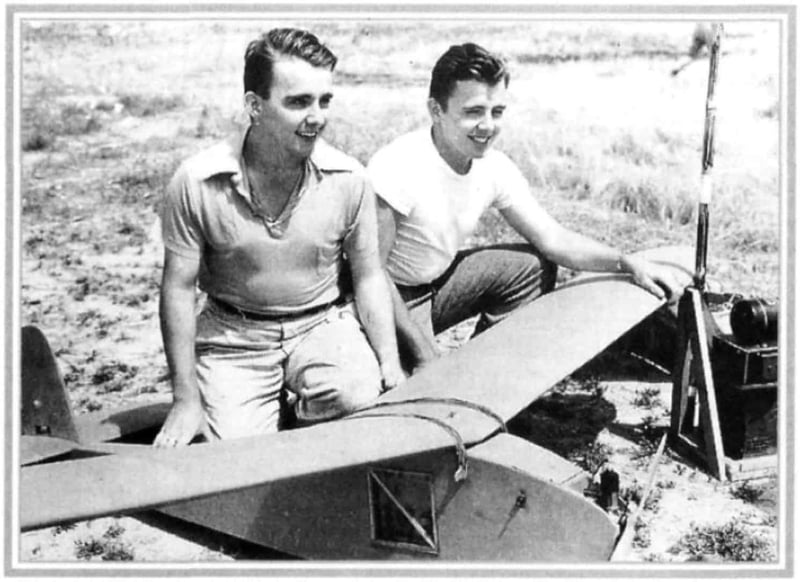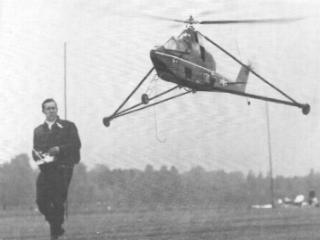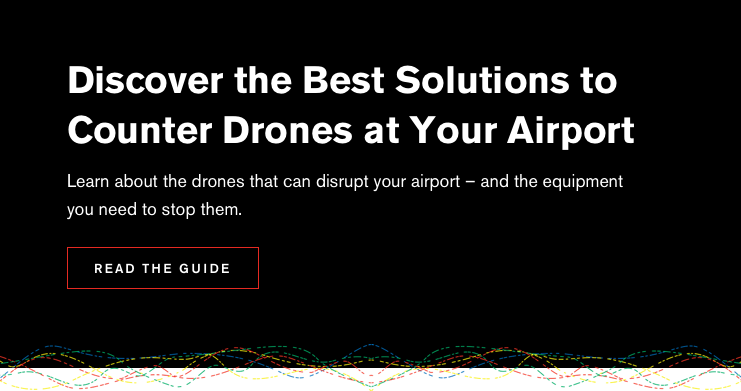The Evolution of Drones: Rise of the Consumer Drone
This is the third instalment of 'Evolution of the Drone Threat'. Looking for Part 1 or Part 2?
Part 2: From Aerial Targets to Eyes in the Sky, and Bombs on the Ground
In the previous articles, we dealt mainly with the military development of drones. Now we turn our attention to the rise of the consumer drone.
That story starts in the U.S. in 1936 with twin brothers and a little aeroplane named 'Big Guff'.
Big Guff Inspires RC Aircraft Enthusiasts
The first model aircraft competition was held in Detroit in 1936. Somewhat ahead of the times, not a single entrant turned up. Three flew the following year, and five the year after, but these first contests, oddly enough, didn't require flying. The planes were judged in a static position only.
In 1939 Walter Good, along with twin brother William, won the 1939 competition, inspiring RC enthusiasts across the U.S.

With their vacuum-tube controlled plane, "Big Guff," they scored 89 out of 100 for craftsmanship, RC operation and flight manoeuvres. Second-place scored just 11 points.
Owing to that performance in 1939, Walter and William Good are credited with building and operating the first fully-functional RC aeroplane.
Big Guff was gifted to the Smithsonian Institute in 1960 and, just in case you happen to be passing by, it's still on display there.
Transistor Radio and the First RC Helicopter
Remote control models gained popularity during the 1950s but were limited by battery capacities until the invention of the transistor. Even with transistors though, the available models were simple fixed-wing planes and were often challenging to fly.

In 1968, Dr Dieter Schluter, from West Germany, built the first fully controllable model RC helicopter and is considered by many as the father of RC helicopter flight.
In the next three decades, plenty of RC aircraft were produced and sold as hobby aircraft. Many were sold as kits to be built. Speaking from my own experience; perhaps more time was spent making them than flying them! Crashes and patch-ups (where possible) were frequent.
But still, RC aircraft were not yet being sold to the masses. That changed in 2010. And it was the combination of several independent, but familiar, technologies that brought it about.
Smartphone: Father of the Smart Drone
First, there was a shift away from combustion engines to brushless electric motors, due to their favourable power-to-weight ratios, lower noise, and cleaner operation. Second, laptops and mobile phones were being powered by new battery technology - lithium-polymer or LiPo for short. This would make RC aircraft lighter, quieter and more reliable.
Cheap micro-controller chips were available, which allowed for open-source autopilot software. At least for fixed-wing RC aircraft, in the beginning.

By 2005, more than one research group had worked out how a drone with four vertical-axis rotors could manoeuvre by simply adjusting the speeds of specific rotors. This was much easier than controlling a traditional helicopter, and was the birth of the modern quad-copter drone, at least in appearance.
For the modern drone to really come into existence though, there was still one missing piece of the puzzle; it didn't yet know it's own orientation and direction of movement.
Luckily, tilt sensors, or MEMS (micro-electro-mechanical systems) accelerometers, had become popular in smartphones. Which meant their price had rapidly reduced.
The combination of all these technologies, along with Wi-Fi, is what really gave birth to the modern consumer drone. Here are a few highlights!
Parrot Launches AR Drone
In 2010, the French company, Parrot, released the Parrot AR Drone. It was the very first UAV controlled by a smartphone and had a built-in camera and an optional protective hull for indoor flight (to avoid smashing the rotors when you inevitably crashed into your living room wall). This makes it pivotal in the evolution of drones.
.jpg?width=800&height=534&name=untitled%20(1).jpg)
The idea was you could fly the drone in free flight, using your smartphone as the controller, or you could race or even shoot at your friends in augmented reality. Hence AR in the product name.
Including the AR Drone 2.0 (released in 2013), Parrot has sold over 500,000 AR Drones since the original launch in 2010. It's certainly not the most successful consumer drone, but it did pave the way for those that followed.
DJI Launch Phantom 1 (and 2)
In January 2013, the company which reportedly now accounts for more than 50% market share, DJI, released the Phantom 1 drone.
.png?width=480&name=untitled%20(1).png)
It could fly for just 10 minutes, and it didn't (yet) have an integrated camera. Instead, you could mount your GoPro camera, if you had one. It also wasn't smartphone integrated, so control and situational awareness of the drone in real-time wasn't as easy as it is now. But it was still revolutionary for its time.
.png?width=480&name=untitled%20(2).png)
Phantom 1 was quickly followed by Phantom 2, in December 2013. Flight time went up to 25 minutes, and it included a video downlink. The camera could be controlled in real-time, and now you could see what you were filming. Smartphone integration, auto-return, increased flight speed and control range all helped DJI grow their position in the market, and to become regarded as the industry standard in hobby drones and film and photography alike.
Amazon Delivers Drone Hype
Also in December 2013, Amazon CEO, Jeff Bezos, announced that drones were being considered as a delivery method. This was another significant shift in the evolution of drones and their commercial use.
.jpg?width=800&height=489&name=untitled%20(2).jpg)
The prototypes were Octocopters capable of lifting a 2.5kg payload up to 16km away from a fulfilment centre. 2.5kg doesn't sound like much, but that covers 86% of the items that Amazon deliver!
Of course, it seems obvious now, but back then this announcement really stunned the public and absolutely contributed to the drone hype that was then gathering momentum.
Frankie Goes to Hollywood (With His Drone)
Although Hollywood had already been using drones for filming, in 2014 the Federal Aviation Administration (FAA) granted permission for film & TV production companies to begin legally using drones on set.
.jpg?width=800&name=untitled%20(3).jpg)
That's the year DJI also launched their new drone, Inspire, aimed squarely at filmmakers. Inspire came with a 4K camera and retractable landing gear which could get out of the way of the camera enabling 360-degree shooting.
.jpg?width=800&name=untitled%20(4).jpg)
Nowadays drones are just another tool in a filmmakers toolkit. And there are drones available on the market today capable of lifting camera equipment up to 20 kilograms.
.jpg?width=800&name=untitled%20(5).jpg)
This one from Norwegian company Griff Aviation claims to be able to lift up to 200kg! Looks like a no-frills taxi-drone to us!
But in all seriousness, the possibilities for patient evacuation in difficult to reach and remote locations looks pretty cool. And it could be well utilised for disaster relief supply tasks and all kinds of things.
Let's just hope it never carries 200kg of explosives...
Phantom 4 Avoids Obstacles to Become Most Advanced Consumer Drone
In 2016 DJI launched Phantom 4. It was the most advanced drone the industry had ever seen. By a long way. This was a significant step in the evolution of drones.
.jpg?width=800&name=untitled%20(6).jpg)
It was also the first consumer quadcopter with obstacle avoidance; not only could it see the world around it, but it could react to it too!
For that to work, DJI threw an unprecedented amount of technology at Phantom 4. It had two cameras on the front and two on the bottom, along with an integrated 4K camera for aerial photography.
With its enhanced safety features and new autonomous flight modes, Phantom 4 quickly became the drone to own for both enthusiasts and commercial pilots alike.
Apple Takes Off
In another big moment for the consumer drone industry, Apple broke cover and announced a new partnership with DJI.
.png?width=800&name=untitled%20(3).png)
With the release of Phantom 4, Apple made DJI's drones available to purchase online and from its Apple Stores. A clear sign that drones had become even more mainstream.
Rapid Growth, Near-Misses and Laws & Regulations
In the last two years a lot has happened in the evolution of drones.
- There’s been increasing criticism for near misses with aircraft, sparking the debate for no-fly zones.
- DJI launched Mavic Pro; a compact drone including 27 minutes of flight time and 60km/h in sports mode.
- Yet another DJI model, Spark, is released. Spark is a small, light and affordable addition to DJI's growing range of drones.
- The popularity of consumer drones has continues to grow, as has the need for laws and regulations.
- Facebook has developed solar-powered drones aimed at providing internet to the last remaining internet-less and most remote communities around the world.
- The DJI Mavic Air was released, with a 21-minute flight time, 32MP panoramas and 4K video at 30fps.
- The Drone Racing League (click for video) and other FPV (first person view) racing competitions were established.
What modern consumer drones can do these days is absolutely phenomenal. And their development and growth show no signs of slowing.
But there is a flip-side.
Next stop in the Evolution of the Drone Threat: 'Part 4 - Top Ten Drone Incidents'.


